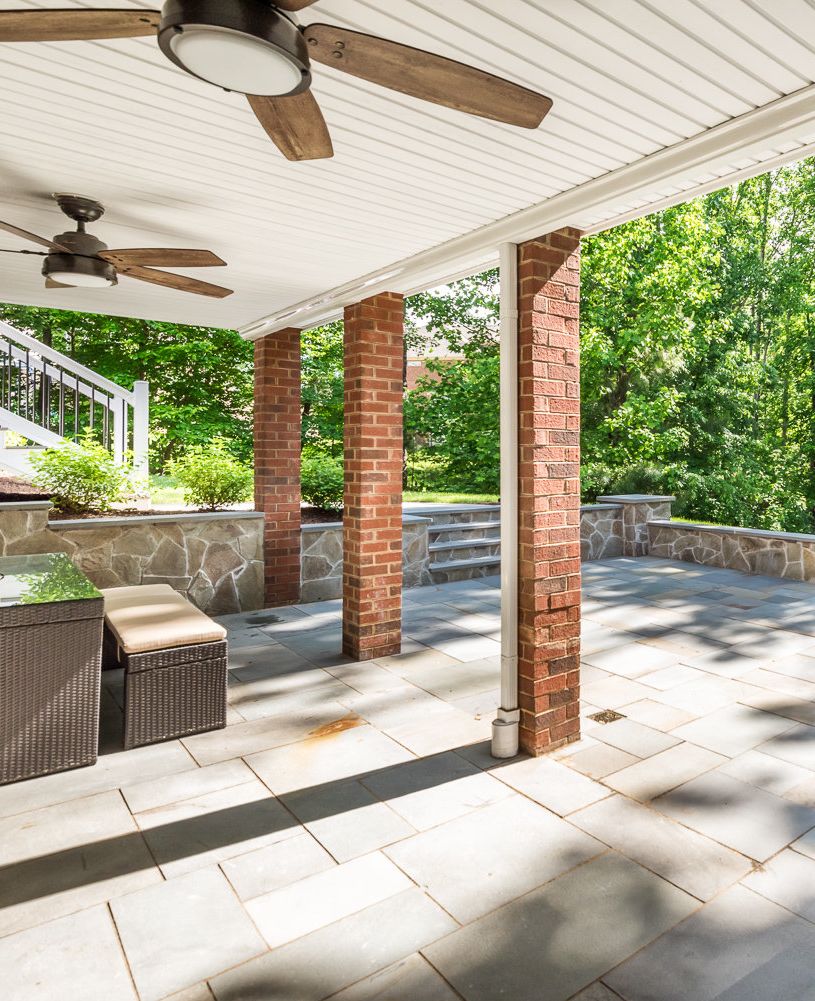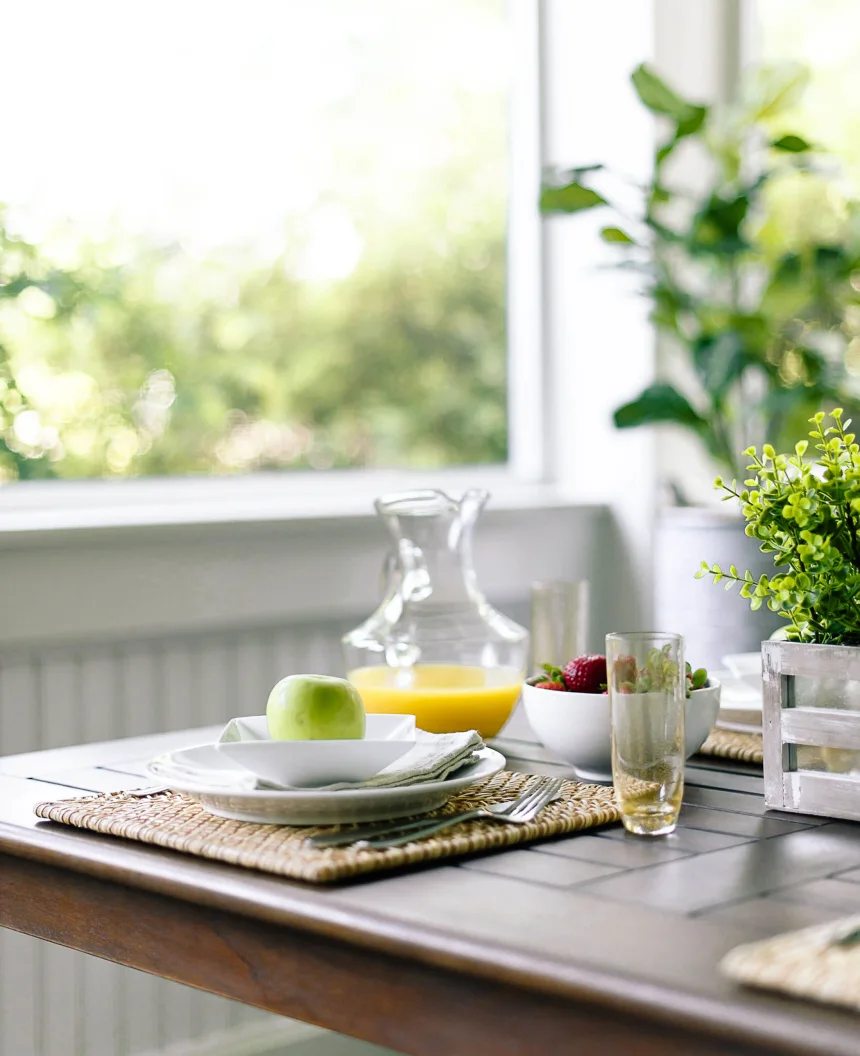Planning
Creating Shade on your Patio or Deck

Story Highlights
Shade is one of the most important and often overlooked elements when designing an outdoor living space. Though it doesn't actually lower the temperature, science shows that shade makes the air feel 10-15 degrees cooler. During the hot summer months, even the most sun-loving individuals need the occasional break from the heat. Without a shady reprieve, individuals will retreat inside to escape the heat.
If you're looking to get the most use (and value) out of your outdoor space, be sure to develop a plan for shade during the design process. In this article, we discuss the six most popular ways homeowners add shade to their outdoor rooms.

Starting with the basics:
Utilize Umbrellas
Whether incorporated with a dining table or cantilevered over a lounge area, umbrellas are a reliable and versatile source of shade.
Price: $ - $$
Pros: Unlike fixed structures, most umbrellas can be moved around to provide shade wherever it is needed. From a cost perspective, umbrellas typically offer the most shade for your buck.
Cons: Though most are moveable, most quality umbrellas are heavy and require significant effort to relocate. Additionally, umbrellas don't typically shade an entire outdoor room and they can blow over in storms. does require effort.

Plant a Shade Tree
The OG of shade, canopies of trees have provided relief from the hot sun for longer than the existence of man.
Price: $
Pros: It's always a "pro" when you plant a tree. You'll create shade while improving the environment and providing a habitat for numerous animals and organisms.
Cons: Unless you're using magic beans, planting a tree doesn't provide immediate shade. Depending on your starting size, it could be 5-10 years before a tree provides significant shade to your outdoor space. Additionally, if planted too close, tree roots can wreak havoc on patio and deck foundations.

taking it to the next level
Pergolas
When looking to provide shade for an entire outdoor room, you need a fixed structure like a pergola.
Price: $$-$$$ (Price varies depending on size and materials)
Pros: Pergolas provide a nice break from the sun that is not as overwhelming as a full roof structure. Pergolas also provide a structure for mounting fans, lights, outdoor televisions, audio, and more.
Cons: Though they provide more shade than people think, pergolas do not provide a complete break from the sun.
Tips: For increased shade, design a pergola with top runners and rafters closer together. Also, consider installing shades and curtains for increased shade and privacy.

Under-Deck Ceiling
Installing an under-deck ceiling creates an open-air porch without the need/cost of a roof structure.
Price: $$-$$$ (Price varies depending on the materials and size/design of the deck)
Pros: This maximizes the function and use of a property; it truly provides great bang for your buck.
Cons: Proper installation of an under-deck ceiling includes a drainage system that can add significantly to the cost. If you're trying to install an under-deck ceiling to an existing deck, the contractor may have to take up all of the deck boards to properly install the drainage system.

If you need full shade, add a roof
Freestanding Pavilion
If you want full shade for a patio room, your best option is a freestanding pavilion.
Price: $$$-$$$$
Pros: If shade is what you want, a full roof structure is what you need. These structures create stunning outdoor rooms that are as comfortable as you can be on a patio.
Cons: Pavilions are one of the most expensive structures you can add to a patio. Additionally, unlike a porch, these free-standing structures are typically detached from the house and cannot be enjoyed on a rainy day without getting wet.

Porch
Whether screened or open-air, a porch provides an incredibly comfortable setting to enjoy the outdoors.
Price: $$$$
Pros: Attached to the house, a porch allows you to step outside and enjoy fresh air, no matter the weather.
Cons: Even a basic, no-frills porch, requires a significant investment. If you add additional features, design flourishes, and low maintenance materials, the costs can increase quickly. Additionally, attaching a structure to your home poses additional risks and unpredictable, change order costs.
Estimating Third-Party Designs
Estimating Third-Party Designs
At Outdoor Dreams, we occasionally receive inquiries from homeowners or designers asking if we can provide an estimate based on plans that have already been developed by another architect, landscape architect, or designer. While the answer is yes, it’s important to understand that our approach is different from a traditional contractor's—and it comes with a $1,500 fee. Here's why...